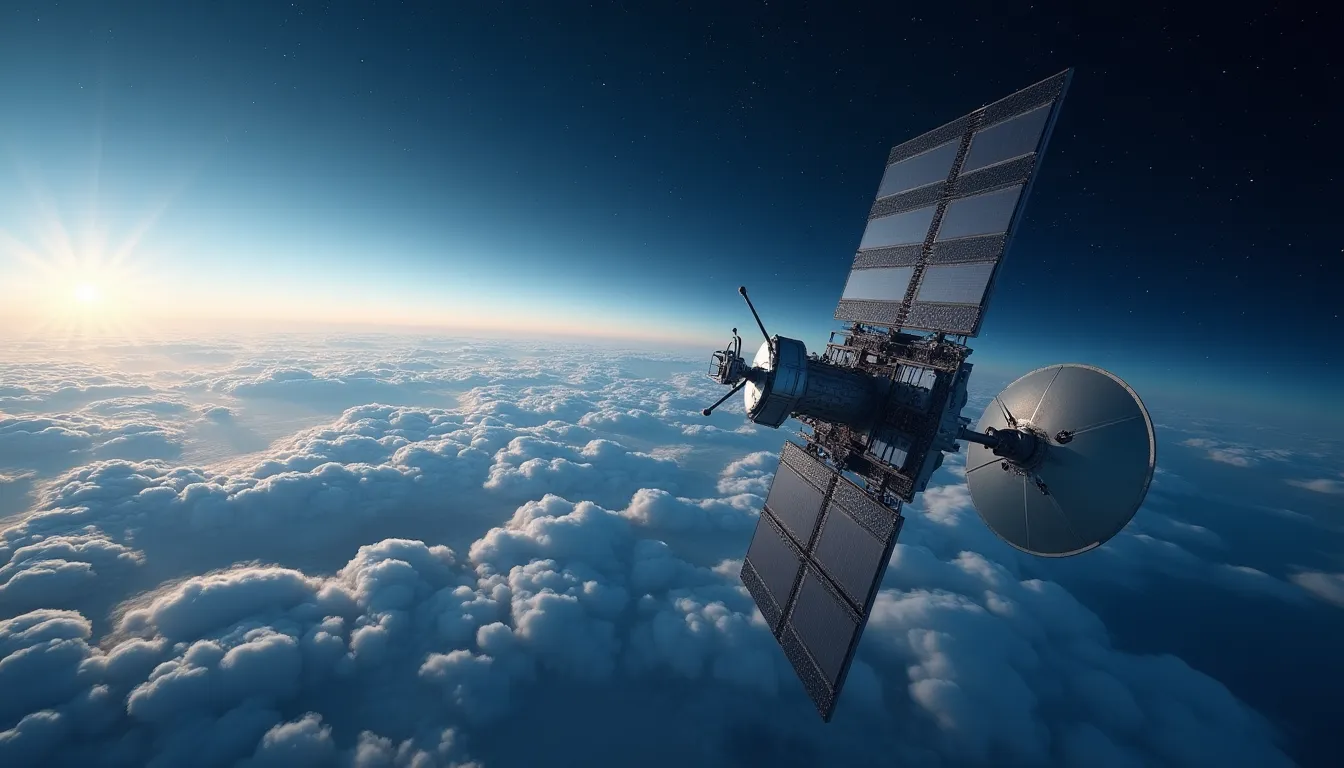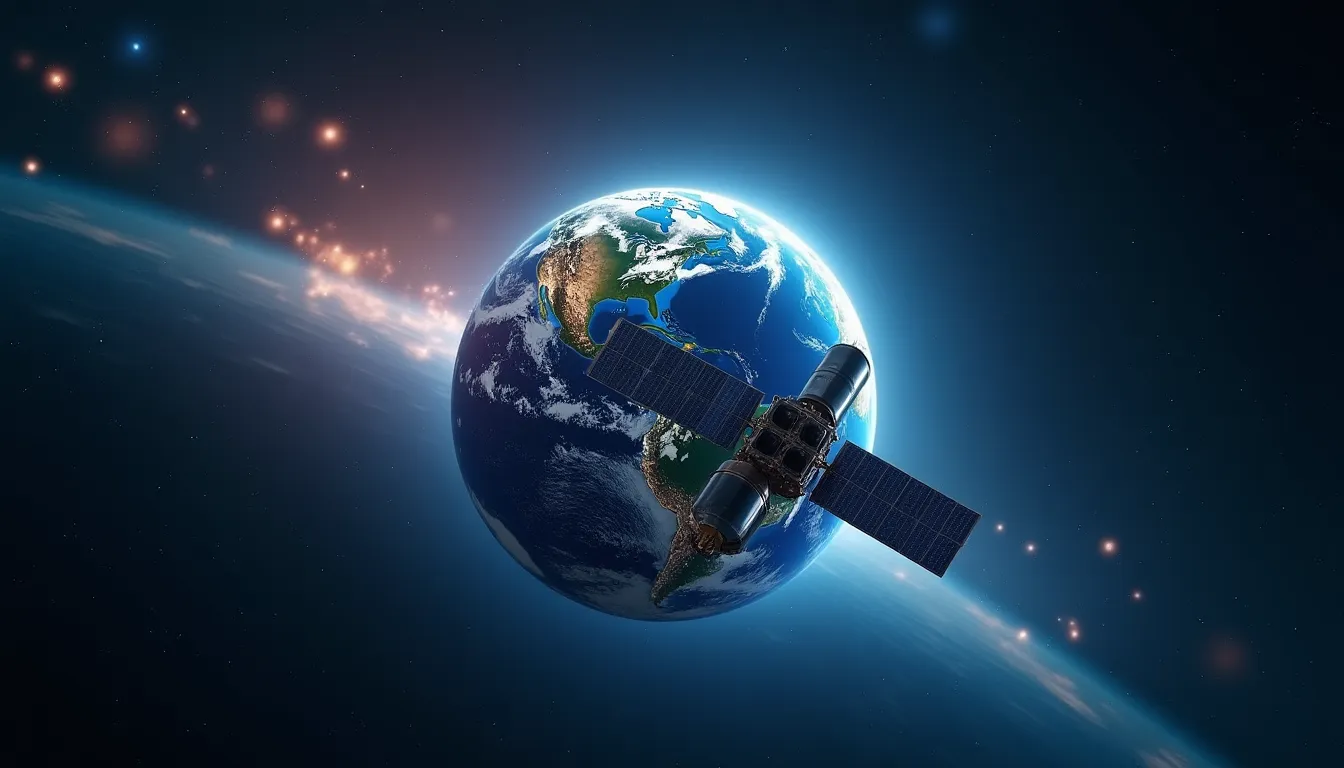Recent advancements in the satellite sector are reshaping the aerospace, defense, and technology industries. Key regulatory changes, strategic initiatives, and new satellite launches are driving innovation and competition in space, particularly in the context of the emerging Space Race 2.0.
FCC Overhaul of Satellite Licensing
The U.S. Federal Communications Commission (FCC) has announced a significant overhaul of its satellite licensing process, shifting from a bespoke, case-by-case approach to a streamlined “licensing assembly line.” This new methodology aims to expedite the approval process, making the default response to satellite licensing requests a “yes.” This reform is designed to accelerate the deployment of satellite constellations, such as SpaceX’s Starlink, which has recently launched 28 new satellites into orbit.
FCC Chairman Brendan Carr has framed this initiative within the context of a new Space Race, emphasizing the need for the U.S. to maintain its competitive edge against other nations, particularly China, which is actively developing its own Low Earth Orbit (LEO) satellite networks. The overhaul is expected to facilitate more intensive use of the upper microwave spectrum, which is critical for high-capacity data transmission necessary for modern satellite operations.
With a broader range of private companies now involved in satellite deployment beyond traditional government contractors, the U.S. aerospace industry is entering a new phase characterized by increased innovation and collaboration.
The Golden Dome Initiative: A New Strategic Framework
In tandem with these regulatory changes, the Golden Dome Initiative has emerged as a pivotal strategic framework aimed at integrating advanced private-sector satellite technologies with U.S. government defense requirements. This initiative highlights the dual-use nature of satellite technologies, which play vital roles in both civilian applications—such as navigation, weather forecasting, and broadband services—and military operations—including secure communications, Earth observation, and anti-jamming capabilities.
By encouraging government investment in commercial satellite companies, the initiative aims to foster innovation that benefits both sectors. However, it also raises concerns about the potential for an arms race in orbit and increased risks associated with space debris. Balancing security needs with open access to satellite technologies will be a critical challenge moving forward.
Experts argue that sustained government funding and careful policy considerations will be essential in managing these complexities. As space becomes increasingly congested, the integration of technologies like the Advanced Navigation System, which features high-performance MEMS accelerometers, will be crucial for ensuring precise navigation and stability in satellite operations.
The Formosat-8 Launch: A Step Forward for Global Satellite Efforts
In a notable development for international satellite deployments, Taiwan’s Formosat-8 satellite has recently departed for the United States, where it is scheduled to be launched into orbit. This mission signifies Taiwan’s commitment to enhancing its Earth observation and scientific capabilities. While specific details regarding the launch date and mission objectives remain undisclosed, the Formosat-8’s deployment reflects the ongoing global activity in the satellite sector, further highlighting the importance of international collaboration in space initiatives.
As countries like Taiwan invest in their satellite programs, the integration of advanced satellite technologies becomes increasingly vital. Systems such as the ZQXXSGDSS System, designed for precise laser beam positioning and tracking applications, could play a significant role in enhancing the capabilities of Earth observation satellites like Formosat-8.
Looking Ahead: The Future of the Satellite Sector
The recent developments in the satellite industry are indicative of a transformative period that could redefine the landscape of space operations. With regulatory reforms paving the way for faster satellite deployment and initiatives like the Golden Dome fostering collaboration between commercial and defense sectors, the potential for innovation is immense.
However, as the competition intensifies and more players enter the field, the industry must address pressing issues related to orbital congestion and space debris management. Technologies such as the DBY011550M System, which integrates essential components for advanced optical applications, will be essential in ensuring that new satellites can operate effectively in an increasingly crowded environment.
Conclusion
In conclusion, the satellite sector is poised for significant growth and transformation, driven by regulatory changes and strategic initiatives that encourage innovation. As the U.S. and other nations navigate the complexities of space operations, continued investment in advanced technologies and a commitment to responsible space practices will be crucial.
The future of satellite technology looks bright, with the potential for enhanced global connectivity, improved disaster response capabilities, and advanced Earth observation services. As we stand on the brink of a new era in space exploration, the collaboration between government and private sectors will be key to unlocking the full potential of satellite technologies.
References
-
FCC vows to fast-track satellite licensing in Space Race 2.0 (www.theregister.com) - 10/7/2025 The FCC’s processes are set for an overhaul, with bespoke licensing being ditched in favor of what Carr called “a licensing assembly line” and a …
-
The Golden Dome Initiative: A New Era for the Satellite Industry (www.satellitetoday.com) - 10/7/2025 The plan focuses on integrating advanced private-sector satellite innovations with government requirements, ensuring the United States and its …
-
FCC Announces Tentative Agenda for October 2025 Open Meeting (www.benton.org) - 10/7/2025 FCC Announces Tentative Agenda for October 2025 Open Meeting · Space Modernization for the 21st Century · Upper Microwave Flexible Use Service …
-
First Formosat-8 satellite leaves for US launch (www.taipeitimes.com) - 10/7/2025



